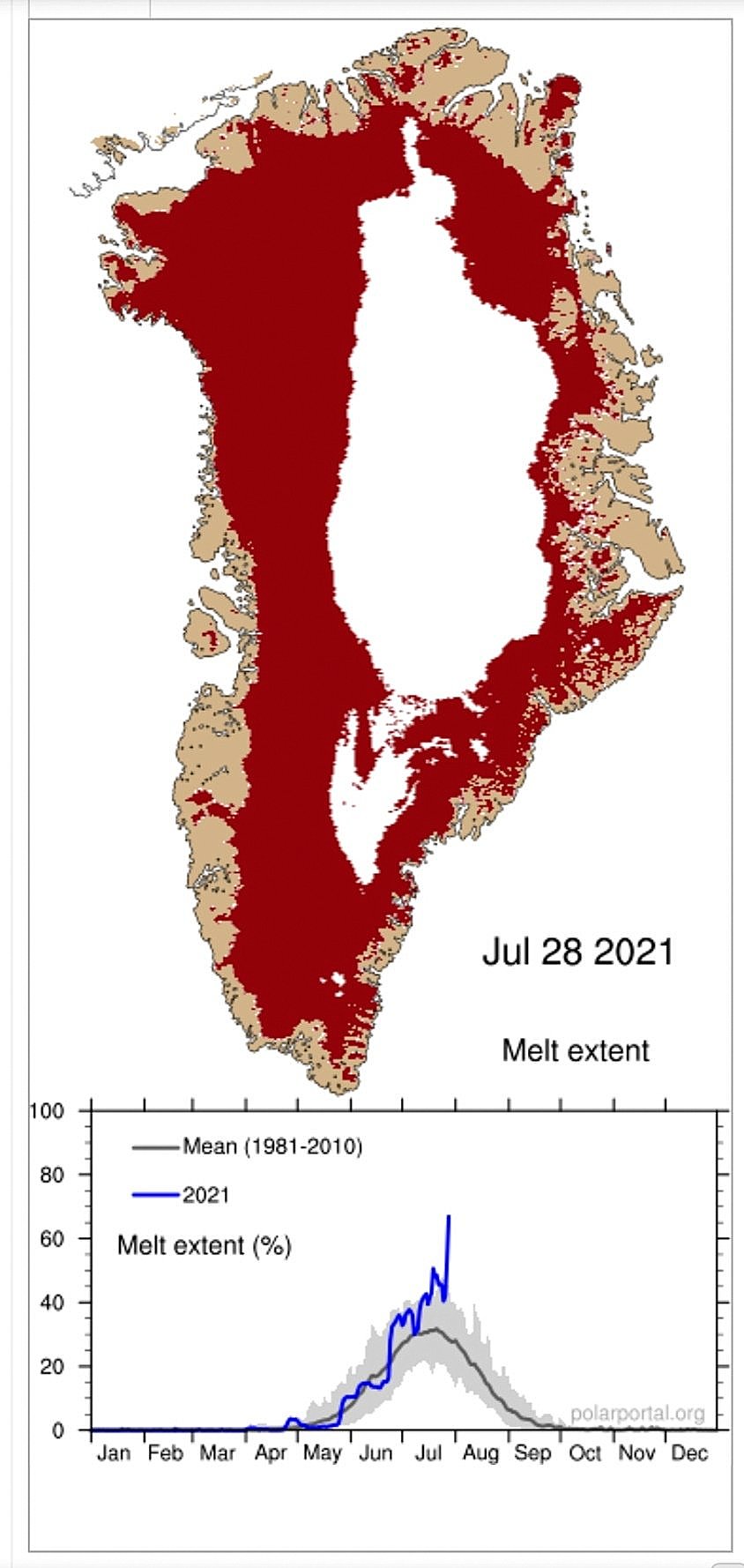Old Ice Vanishes
Old Arctic sea ice, 2015 (credit: EOS)
Since 2006, the National Oceanic and Atmospheric Administration, NOAA, has released an Arctic Report Card. The Agency's report is a timely and scientifically accurate source for clear, reliable, and concise information on the current state of the Arctic environment relative to historical records.
The data released in 2015 indicated the age of old sea ice over a 25 year period of measurements showed that: in 1985, 20% of the ice pack was very 'old ice' while in March 2015 this ice only constituted 3% of the pack.
In the latest report for 2020, the NOAA researchers noted: the sustained transformation to a warmer, less frozen, and biologically changed Arctic remains clear. Extreme warm air temperatures in the Eurasian Arctic illustrate significant region-wide effects of year-to-year variability and connections across the entire Arctic.
The NOAA data is often accompanied by an animation using satellite measurements to provide a time-line of changes to the Arctic's ice dynamics.
Combining the ice decline information with findings from a Nature article on Greenland's glaciers provides another dimension to the ice situation. Additionally, Danish meteorologists have announced a massive melting event on the frozen island. Their new measurements of melting that is flowing off the Greenland icecap are enough to cover Florida with new two inches of water. The area overwhich ice melting is occurring is also larger than two years ago when previous data had been collected.

Extent of Greenland ice melting, 7-28-2021 (credit: Polar Portal)
Massive melting event in Greenland. While not as extreme as in 2019 in terms of gigatons (left image - but still would be enough to cover Florida with two inches of water), the area over which melting takes place (right image) is even a bit larger than two years ago.
The melting of Arctic ice masses are now being observed in 'real time'. Pledges made to reduce greenhouse gas emissions have a long way to go before the climate and environmental feedback loops now in motion are halted or reversed, if they can be. WHB